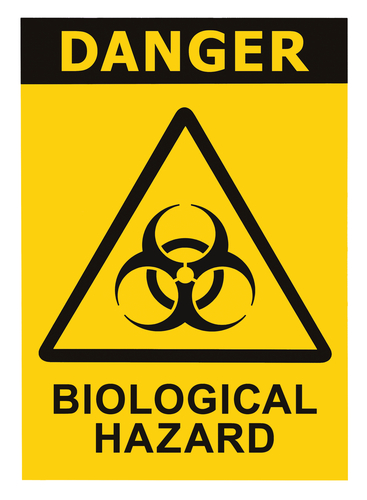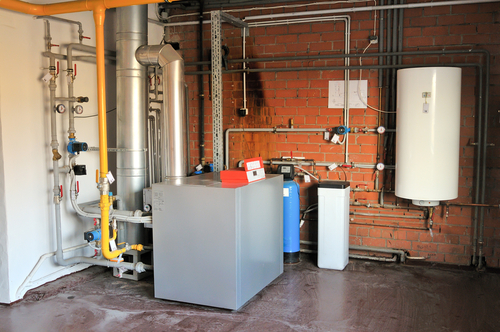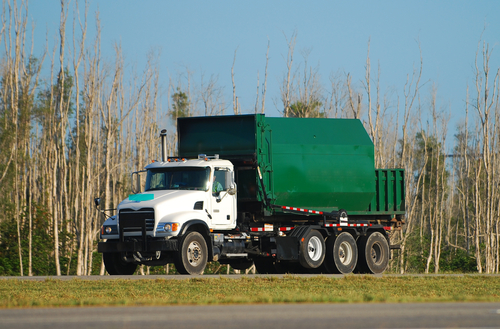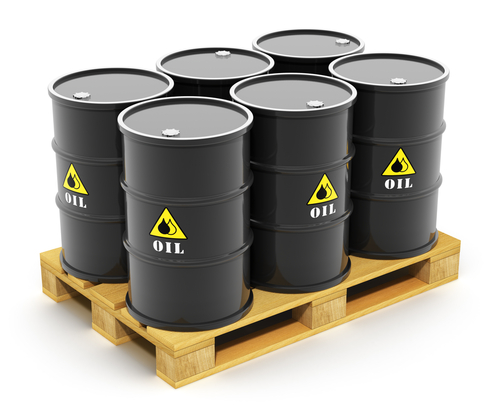There are literally tens of thousands of medical facilitiesthroughout the U.S., from large hospital campuses to cornerdrugstores. The healthcare industry is growing rapidly andfacilities will continue to expand to match patient and technologydemands. As the industry evolves, these facilities are subject tomany environmental exposures on a daily basis.
|The Environmental Protection Agency has recently increased itsfocus on healthcare facilities, resulting in an initiative toenforce compliance. Environmental regulations that may affecthealthcare facilities include the Clean Air Act; Clean Water Act;the Resource Conservation and Recovery Act; and the FederalInsecticide, Fungicide and Rodenticide Act. State and localagencies may also implement their own protocols.
|Many operators of hospitals and other medical facilities believethey have minor environmental exposures that they adequatelyaddress with self-audits and inspections. Chemical usage or wastestreams may be relatively minor at some medical offices, but hereare some specific environmental exposures that relate to normaloperations of most healthcare facilities.
|Contractors bring many potential environmental exposures ontothese medical campuses as part of their construction work. How arepaints and solvents stored? What about dust from carpentry work?How are the asbestos and lead being handled in older facilitiesduring renovation? Are contractors and healthcare facilitiesfollowing recommendations from the Joint Commission (JCAHO), OSHA,and the Infection Control Risk Assessment (ICRA) process, and insome cases, the AIA Minimum Design Standard for HealthcareFacilities during construction? In some cases, the facilities mayalso have their own regulations.
||
Environmental exposures
|Any medical facility is going to have chemicals, medicines, andbiological waste onsite at some point during a typical day. How arethese materials stored? Could a patient or client be exposed duringthe course of a visit? Was any hazardous substance poured down thedrain and into the local water supply? Is all piping in thebuilding new and inspected regularly; could there possibly be aleak? While many healthcare campuses are relatively new, there arestill thousands that have been operating for decades. In an agingfacility, maintenance is constant for piping, drainage systems,storage units, and boiler rooms.
|Another environmental exposure commonly found at medical officesand hospitals are storage tanks which are often used to supportemergency generators or boilers. Tanks may be aboveground orunderground and must be properly registered with the respectivestate if applicable. How old are these tanks? Is proper containmentin place? A leaking tank will impact soil and groundwater at thefacility and may migrate onto neighboring properties.
|Waste generated at these facilities may be treated onsite via anincinerator. Are proper environmental permits in place foremissions? Has the waste been completely burned or does residueremain onsite or impact a neighboring property? If the waste istransported and disposed of offsite, there could be a spill intransit or a release at the waste facility. These releasedmaterials can impact nearby properties, streams and wildlife. Evenif the medical facility isn't directly responsible for the spill orrelease, they can easily be dragged into any legal action. It ispossible that self audits/inspections catch potential issues thatare above ground level, but many other exposures exist below thesurface and away from the medical facility itself.
|
Indoor air quality issues
|Indoor air quality is an enormous concern for healthcarefacilities, especially hospitals or any location where a thirdparty could be affected. How old is the HVAC system at thefacility? Are there any signs of water damage or leaks? Mold andlegionella can be spread throughout an underperforming/brokensystem, posing a danger for immune-compromised patients. Indoor airquality is also affected by equipment and any chemicals used duringthe course of normal business or construction activities. Should afacility suffer from a mold or legionella outbreak, theconsequences would be severe.
|Pharmaceutical disposal is an emerging risk that is leavingfacility owners and environmental law enforcement agenciesperplexed. Many impacts from disposal are not yet known, but moreand more damage is being done to the water supply because ofimproper pharmaceutical disposal. This waste is also beingdiscovered in soils and even the food we eat. While not yet fullyregulated, it is still an environmental exposure that will burden amedical facility should it be determined the facility has caused apollution event to occur.
|
Waste transportation and disposal
|One way healthcare facility owners can address theirenvironmental exposures is by purchasing a site pollution policy,also known as a premises pollution or environmental impairmentinsurance policy. Generally, environmental issues are excluded frommost general liability or property insurance policies, includingdefense costs. If any coverage is provided via the insured'scurrent insurance portfolio, it is most likely very limited, andwould not put a dent into paying for a true environmental claim.Even if the facility is not at fault, they can still be broughtinto a claim from a neighboring property, an offsite disposalcompany, or a contracted waste hauler. The medical facility ownerwill have to pay out of pocket to defend the case since protectionis not provided in a standard insurance policy.
|Site pollution policies can be tailored to meet the needs of aspecific healthcare facility. These policies provide coverage foron-site cleanup costs and third-party bodily injury, propertydamage, and cleanup as a result of pollution at, on, under ormigrating from a covered location. Defense costs are also covered.Coverage is provided for all locations scheduled onto the policy.For example, should chemicals be disposed of improperly and soilson the insured's property as well as a neighboring site areimpacted, the site pollution policy will respond to this pollutionevent.
|Many enhancements exist for a site pollution policy, especiallyone crafted for healthcare facility risks. Coverage for abovegroundstorage tanks is built into the policy form; underground storagetanks may be added via endorsement. Transportation coverage formedical waste hauled by the insured or by a contracted carrier canbe offered, addressing any over the road spills. Quite often aspill during transit results in contaminants escaping intosurrounding lakes, streams or natural habitats, impacting naturalresources that cannot be replenished. Coverage for naturalresources damage is generally built into a site pollution policyform. Non-owned disposal site coverage is provided for wastedisposal at offsite, approved facilities.
|Should this offsite waste facility have a release or anenvironmental event, many times all parties sending their waste tothe disposal site will be brought into the claim. Coverage for moldand legionella addresses potential indoor air quality exposures andany resulting remediation necessary due to contamination. Somepolicy forms also provide coverage for crisis management. Should ahospital have to address an environmental emergency, they may haveto deal with a tarnished reputation. Crisis management coverageprovides outside public relations/crisis management assistance tothe policyholder.
|A site pollution policy is always a claims made form. Policyterms can vary from one to 10 years; flexibility is a key featureof all site pollution policies. Limits of liability can be as lowas $500,000 and as high as $50 million. Even higher limits can beassembled if necessary, depending on the needs of an individualrisk.
|Most insurance carriers will request the completion of aproprietary application along with current GL/Property loss runs. Aschedule of properties will be needed. If any environmentalregulations or permits affect the site, the carrier will want toreview these along with any published audits or environmentalassessment reports. Facility maintenance and risk managementprocedures should also be provided as part of the submissionprocess.
|The healthcare industry is constantly growing and withdevelopment come additional environmental exposures. Environmentalregulations, which constantly change, must be addressed by afacility owner. Even if a site is well maintained and managed,accidents can occur, leading to catastrophic results. A sitepollution insurance policy will protect against daily environmentalmishaps and allow the facilities to care for the communities inwhich they serve.
||
Claim Scenarios for Healthcare Facilities:
- A fuel oil tank at a medical office leaks, releasing oil intothe soil and groundwater, affecting neighboring properties. Localauthorities require the hospital to clean up the contamination. Thecost for cleanup exceeds $400,000.
- A landfill used by a hospital is a source of contamination to adrinking water well located down-gradient from the facility. Thehospital is found to be a responsible party as their waste has beendisposed of at the landfill for many years. The insured contributedover $100,000 to settle the claim.
- A medical waste transporter hired by a doctor's officeoverturns and waste is spilled into a stormwater drain,contaminating a nearby stream. The cost of cleanup exceeds thetransporter's policy and as the party responsible for generatingthe waste, the insured is required to pay the remaining costsassociated with the cleanup.
- Indoor air quality issues stemming from a damaged airconditioning system in a local hospital sickened several patients.There were two fatalities and several patients were in criticalcondition. Claims for bodily injury exceeded $1,000,000.
Pollution exposures can be quite significant for healthcarefacilities and any response to a pollution event can becomeexpensive. However, the environmental insurance marketplace offersseveral affordably priced, quality solutions for propercoverage.
|Want to continue reading?
Become a Free PropertyCasualty360 Digital Reader
Your access to unlimited PropertyCasualty360 content isn’t changing.
Once you are an ALM digital member, you’ll receive:
- All PropertyCasualty360.com news coverage, best practices, and in-depth analysis.
- Educational webcasts, resources from industry leaders, and informative newsletters.
- Other award-winning websites including BenefitsPRO.com and ThinkAdvisor.com.
Already have an account? Sign In
© 2024 ALM Global, LLC, All Rights Reserved. Request academic re-use from www.copyright.com. All other uses, submit a request to [email protected]. For more information visit Asset & Logo Licensing.








